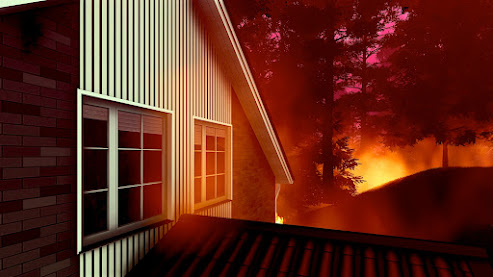In
the world of commerce, where bustling businesses and towering structures define
the landscape, the destructive force of a hurricane can send shockwaves through
even the most resilient enterprises. When the winds subside and the waters
recede, the arduous task of navigating commercial hurricane damage claims
emerges. This unique journey requires a blend of strategy, expertise, and
determination as business owners strive to rebuild, restore, and reclaim their
livelihoods. Here we delve into the intricacies of commercial hurricane damage
claims, providing insights and guidance to help businesses weather the storm
and emerge stronger than before.
The Anatomy of Commercial Hurricane Damage Claims
When
a hurricane strikes, commercial properties can suffer a range of damages – from
structural issues and water intrusion to inventory loss and business
interruption. The process of filing a commercial hurricane damage claim
involves multiple steps, each requiring careful consideration and proactive
action.
1.
Assessment
and Documentation:
The initial phase involves documenting the extent of the damage. Thorough
photographs, videos, and written records play a pivotal role in substantiating
the claim and providing evidence of the losses incurred.
2.
Navigating
Insurance Policies:
Commercial properties often have complex insurance policies, including coverage
for property damage, business interruption, and additional expenses.
Understanding the nuances of these policies is essential to ensure you maximize
your claim.
3.
Business
Interruption Claims:
Hurricanes can disrupt business operations, leading to lost revenue and
increased expenses. Business interruption claims aim to compensate for these
losses, requiring a comprehensive analysis of financial records and
forecasting.
4.
Estimating
Repairs and Replacements:
Accurately estimating the cost of repairs, replacements, and other necessary
expenditures is a crucial step in the claims process. Collaborating with
experts and contractors can provide reliable figures.
5.
Engaging
Public Adjusters:
Professional public adjusters can be invaluable allies for business owners
navigating the complexities of commercial hurricane damage claims. Their
expertise in negotiating with insurers and advocating for fair settlements can
tip the scales in your favor.
Navigating Challenges with Poise
While
the path to a successful commercial hurricane damage claim is rife with
challenges, a strategic approach and proactive mindset can make all the
difference.
1.
Preparation
is Key:
Preparing for the unexpected is not a luxury – it's a necessity. Review your
insurance policies regularly, ensuring they adequately cover potential
hurricane-related damages.
2.
Prompt
Reporting:
Notify your insurance company of the damage as soon as possible. Prompt
reporting is crucial to initiate the claims process swiftly.
3.
Thorough
Documentation:
Comprehensive documentation is your strongest ally. Catalog all damages,
losses, and expenses meticulously to present a compelling case.
4.
Expert
Consultation:
Seek guidance from professionals such as contractors, engineers, and public
adjusters. Their insights can provide clarity and ensure your claim accurately
reflects the true scope of damage.
5.
Effective
Communication:
Maintain open and transparent communication with your insurance company and
adjuster. Clear communication can expedite the process and mitigate
misunderstandings.
The Silver Lining: Rebuilding Stronger Than Before
While
the aftermath of a hurricane may seem like an insurmountable challenge, it also
presents an opportunity for transformation and growth. As businesses rebuild,
they can implement resilient design principles, upgrade infrastructure, and
enhance disaster preparedness plans. Embracing these strategies not only
safeguards against future incidents but positions businesses to thrive in the
face of adversity.
In
the end, the journey of a commercial hurricane damage claim is a testament to
the indomitable spirit of entrepreneurship. Business owners, armed with
knowledge, determination, and the support of professionals, can navigate the
intricate landscape of claims with confidence. While the hurricane's impact may
be temporary, the resilience, adaptability, and tenacity displayed throughout
the process pave the way for a brighter, more resilient future – where the
storms of today give rise to the successes of tomorrow.

.jpg)
.jpg)
.jpg)
.jpg)
.jpg)
.jpg)
